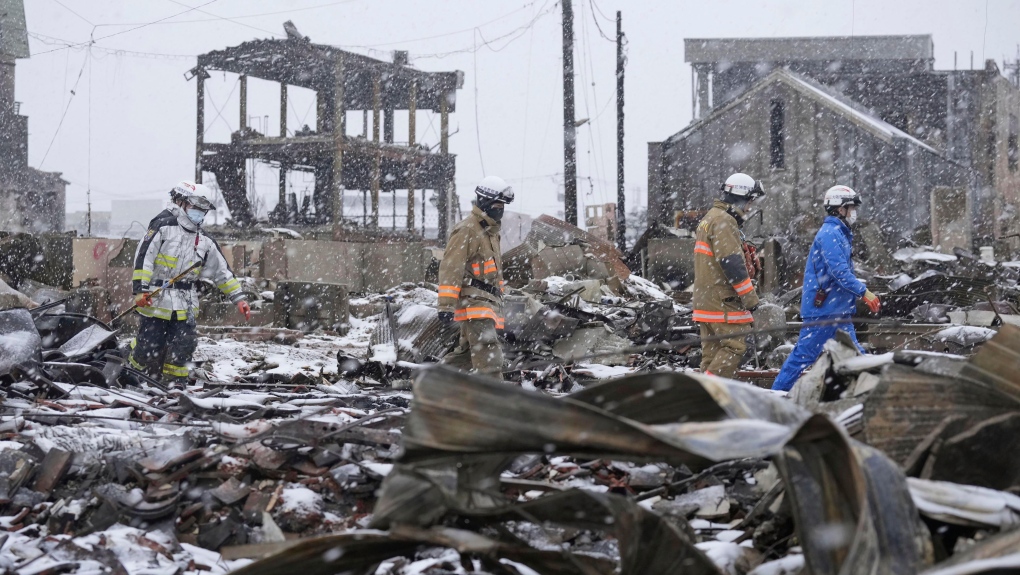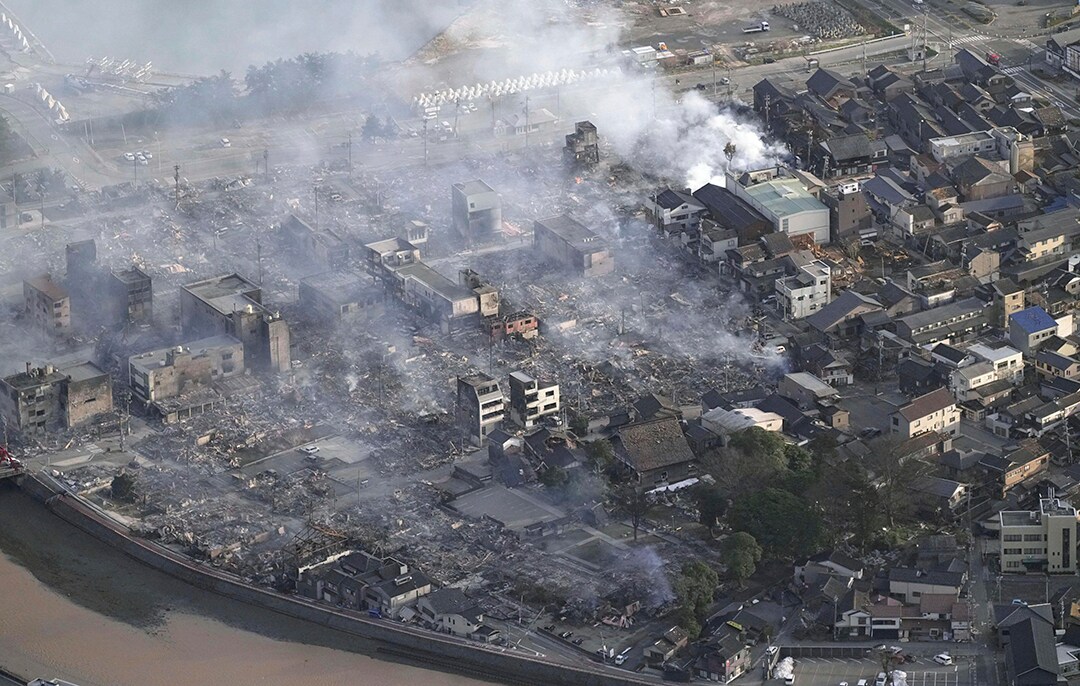Authorities announced Monday that the death toll from Japan’s New Year’s Day earthquake has risen to 161 from 128 overnight, as snow complicates rescue attempts. Thousands of rescuers have been sent in from all around Japan, their task compounded by the quake’s destruction of highways and an estimated 1,000 landslides.
The region has been buried in snow for the last two days, making the job even more difficult.
A woman in her 90s survived five days under the ruins of a collapsed house in Suzu, on the hard-hit Noto Peninsula, before being rescued on Saturday.
In a police film from the rainy scene aired by local media, rescuers can be heard shouting to the woman, “Hang in there!”
“You’re gonna be OK!” they exclaimed. “Stay positive!”
Not everyone was so fortunate. In Anamizu, a 52-year-old man who had lost his 21-year-old son and his in-laws awaited word on his wife, his other three children, and other family members.
“I’d like for them to live. “It’s unthinkable that I could be alone,” he told NHK.
The winter weather is also anticipated to aggravate conditions for more than 28,800 individuals in 404 government shelters.
Landslides impeding assistance vehicles
According to the regional authorities, continuous rain has increased the likelihood of further landslides, and heavy snow may force additional buildings to collapse under their weight.
Damaged roads have shut off at least 2,000 people in various settlements on the remote peninsula, with some of the estimated 1,000 landslides impeding assistance vehicles. As a result, relief supplies have been delayed to reach communities affected by water and power outages.
On Sunday, approximately 20,700 households in the Ishikawa region remained without power. Over 66,100 families were without running water.
“The priority has been to rescue people under the rubble and reach isolated communities,” Prime Minister Fumio Kishida told NHK on Sunday. According to him, the military has despatched small groups of troops on foot to each outlying town.
Kishida noted that the government has “deployed various police and fire department helicopters” to reach them.
2011 monster quake
Hundreds of earthquakes strike Japan yearly, albeit the vast majority inflict no damage due to tight building rules that have existed for more than four decades. However, many structures are older, particularly in rapidly ageing rural villages like Noto.
The country is scarred by the 2011 monster quake, which created a tsunami, killed or went missing approximately 18,500 people, and caused a nuclear disaster at the Fukushima plant.
Given its location on the Pacific Ring of Fire, Japan is no stranger to earthquakes. Understanding the impact of earthquakes and how to prepare for them in Japan is critical for both inhabitants and the global world.
Understanding Japan’s Earthquakes
Japan is on the Pacific Ring of Fire, a region recognized for its intense seismic activity. The country is prone to earthquakes, some of which have had terrible consequences.
Seismic activity in Japan is related to the movement of various tectonic plates beneath the country’s surface, resulting in major and minor earthquakes.
Japan’s earthquake sensitivity
Earthquakes in Japan can be disastrous, resulting in loss of life, infrastructure destruction, and economic consequences. For example, the 2011 Tohoku earthquake and tsunami caused massive devastation and the loss of thousands of lives.
Because of the country’s earthquake sensitivity, authorities and inhabitants must be well-prepared and equipped to deal with such natural calamities.
Japan has made great advancements in earthquake preparation and reaction. The country’s strict code ensures that constructions can survive seismic activity.
Early warning systems and evacuation drills are in place to lessen the damage of earthquakes. The Japanese government has also invested in cutting-edge technology to detect seismic activity and issue timely warnings to the public.
Staying updated on real-time earthquake updates and monitoring is critical for residents and others interested in Japan’s seismic activity.
The Japan Meteorological Agency publishes extensive earthquake data, such as magnitude, epicentre location, and maximum seismic intensity. Access to real-time data improves understanding of Japan’s current seismic status and aids in preparedness measures.
Earthquakes tremendously influence Japan, and education and preparation are critical for limiting their impacts.
Japan continues to endeavour to ensure the safety and resilience of its people in the face of seismic activity, with preemptive safeguards in place and access to real-time data.
For more information on earthquakes in Japan, you can visit the List of earthquakes in Japan on Wikipedia for historical data and significant events. Additionally, for real-time updates on seismic activity, you can access the Japan Meteorological Agency’s earthquake information for the latest reports.
By Geoff Thomas




/cloudfront-ap-southeast-2.images.arcpublishing.com/nzme/XNAETQAKKBHYVHPNBIAWBERAL4.jpg)




